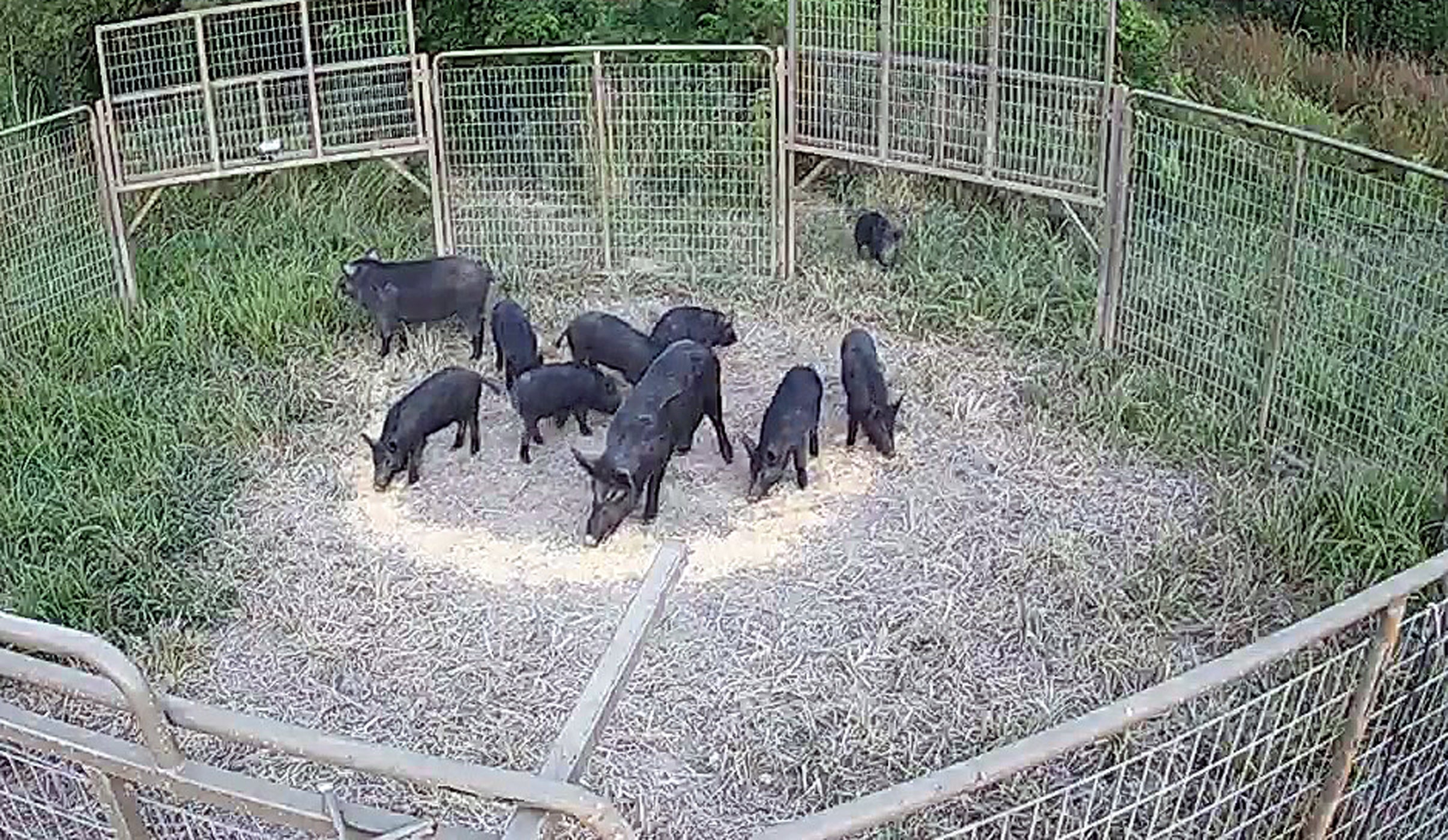By DAVID RAINER, Alabama Department of Conservation and Natural Resources
Despite an increased effort to mitigate the impact of feral hogs in Alabama, the hog population shows no indication of decline.
“Unfortunately, it appears their numbers are continuing to increase,” said Matt Brock, Technical Assistance Wildlife Biologist with the Alabama Wildlife and Freshwater Fisheries (WFF) Division. “I’m basing that on talking to people and on reports from areas that haven’t had hogs before.”
Brock is also basing that theory on the number of feral hogs harvested by hunters during the 2019-2020 season. Disturbingly, that total exceeded the number of white-tailed deer taken during the same period. According to the WFF’s annual hunter survey, it was estimated that about 218,000 deer were harvested. The number of feral hogs taken was estimated at about 255,000.
According to the U.S. Department of Agriculture (USDA), feral hogs cause more than $1.5 billion in damages to property, agricultural interests (crops and livestock), native wildlife and ecosystems as well as cultural and historic resources.
Brock said as part of the Farm Bill passed by Congress, a large, comprehensive program is underway in Alabama to try to stop the spread of feral hogs, particularly in areas of heavy agriculture. The USDA’s Natural Resources Conservation Service (NRCS) is conducting pilot projects in the Alabama Black Belt, the Wiregrass and on the Alabama Gulf Coast.
The Black Belt Project focuses on four watersheds covering almost 85,000 acres in Sumter County. The Wiregrass Project consists of 17 watersheds in Geneva, Houston and Henry counties. The Gulf Coast Project encompasses eight watersheds totaling almost 182,000 acres in Escambia and Baldwin counties.
The projects include purchasing feral hog traps with the latest technology, which allows the traps to be triggered remotely.
“They are trapping on the properties of private landowners with a long history of hog problems around agricultural areas,” Brock said. “They are offering this service to those private landowners in the designated watersheds and have hired several technicians to operate the traps.
“The end goal is not just to remove those hogs but to leave those landowners with the resources and knowledge to continue those trapping efforts once the pilot project ends. That’s a pretty big deal, getting that education out to the landowners to understand how to use the latest technology. I’m very glad to see that.”
One of the problems with feral hogs is the invasive species’ ability to rapidly reproduce. Brock said a typical litter is four to eight piglets, but he has heard of litters as large as 14. Some feral hogs can reach sexual maturity at six months. The gestation period is about 112 to 115 days.
“The sows will generally be close to weaning their litter before being bred again,” he said. “In theory, sows can have three litters every 14 months. Most of the time, they have one or two litters a year. Another thing is the piglets have a very high survival rate. They have very few predators because momma can be pretty aggressive toward anything that messes with her little ones.”
Brock said the bulk of today’s feral swine population in Alabama originated from hogs brought to America in the Mobile area by the Spanish in the early 1500s. He said he has seen some indication that some areas have hybrid stock that includes Eurasian wild boar characteristics.
“That area around Mobile is one of the first places in the United States to have hogs,” he said.
“It’s ironic to me that those hogs pretty well stayed in that drainage for about 400 years until we had gas-powered vehicles,” Brock noted, referencing the fact that the spread of feral hogs was very limited until humans started to transport the swine to other areas. Currently, feral hogs have been reported in all of Alabama’s 67 counties.
“A lot of their movement in the past 30 to 50 years has been in the back of a livestock trailer and then released,” Brock said of a practice that has been outlawed in the state.
“Now, once a hog becomes a person’s possession by either capturing or hunting, it cannot be released alive,” he said. “It must be killed on-site.”








